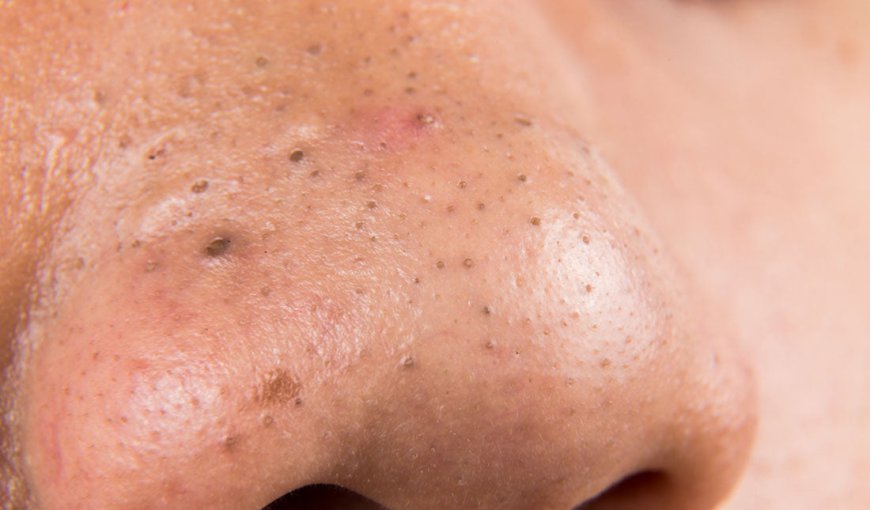Trusted Milia Treatments for Clear, Blemish-Free Skin
Milia are small, white, cyst-like bumps that often appear on the face, particularly around the eyes, cheeks, and nose. These tiny growths are formed when keratin—a protein found in the skin—gets trapped beneath the surface. While Milia Treatments in Dubai are harmless, they can be a source of frustration for many, leading to a desire for effective solutions. Fortunately, there are numerous trusted milia treatments available that can help restore your skin to its clear, blemish-free state.

Milia are small, white, cyst-like bumps that often appear on the face, particularly around the eyes, cheeks, and nose. These tiny growths are formed when keratin—a protein found in the skin—gets trapped beneath the surface. While Milia Treatments in Dubai are harmless, they can be a source of frustration for many, leading to a desire for effective solutions. Fortunately, there are numerous trusted milia treatments available that can help restore your skin to its clear, blemish-free state.
Understanding Milia: Causes and Prevention
Before diving into treatments, it's essential to understand the causes of milia. They can occur due to several factors, including:
- Skin Damage: Injuries or burns can lead to the development of milia as the skin heals.
- Sun Damage: Overexposure to the sun can cause changes in the skin, resulting in milia formation.
- Use of Heavy Products: Certain heavy creams or ointments can clog pores, contributing to the development of milia.
- Genetics: Some individuals may be genetically predisposed to developing milia.
While it might not always be possible to prevent milia, adopting a proper skincare routine can significantly reduce their likelihood. Regular exfoliation, using non-comedogenic products, and protecting your skin from sun damage are critical steps in maintaining healthy skin.
Trusted Milia Treatments for Clear Skin
- Topical Retinoids
One of the most trusted milia treatments is the use of topical retinoids. These vitamin A derivatives are known for their ability to increase cell turnover, helping to prevent the buildup of keratin that causes milia. Retinoids can also improve skin texture and reduce the appearance of fine lines. However, they can be irritating for some, so it's essential to start with a lower concentration and gradually increase usage as your skin adapts.
- Exfoliation
Regular exfoliation is crucial in any skincare routine, particularly for those prone to milia. Gentle exfoliating products containing alpha hydroxy acids (AHAs) or beta hydroxy acids (BHAs) can help slough off dead skin cells and prevent clogged pores. Incorporating exfoliating scrubs or chemical exfoliants into your routine two to three times a week can make a significant difference in preventing milia formation and promoting a clear complexion.
- Professional Extraction
For stubborn milia that don’t respond to at-home treatments, professional extraction by a licensed dermatologist or esthetician can be a highly effective option. During this procedure, a professional uses a sterile needle or a small blade to open the surface of the milia and extract the trapped keratin. This method is quick and can provide immediate results. However, it’s essential to avoid attempting extraction at home to prevent scarring or infection.
- Chemical Peels
Chemical peels are another trusted treatment for milia. These treatments involve applying a solution containing acids to the skin, which helps exfoliate the outer layer and promote cell turnover. Chemical peels can improve skin texture, reduce the appearance of fine lines, and help clear up milia. Depending on the severity of the condition, different types of peels can be used, including superficial, medium, and deep peels. Consult with a skincare professional to determine the best option for your skin type.
- Laser Treatments
For more severe cases of milia, laser treatments can be an effective solution. Laser therapy works by targeting the milia directly, destroying the keratin buildup and encouraging new, healthy skin to regenerate. This treatment is particularly beneficial for those with multiple milia or those who have not found success with other methods. It’s a quick procedure that typically requires minimal downtime, making it a convenient choice for many individuals.
- Microneedling
Microneedling is a minimally invasive procedure that involves using tiny needles to create micro-injuries in the skin. This stimulates collagen production and can help improve skin texture while also aiding in the reduction of milia. The treatment can enhance the effectiveness of topical products, allowing them to penetrate deeper into the skin. Microneedling is suitable for most skin types and can lead to significant improvements in overall skin appearance.
Home Remedies for Milia
While professional treatments are effective, there are also several home remedies that can complement your skincare routine:
- Steam Treatments: Steaming your face can help open up pores and facilitate the removal of dead skin cells. This can be an excellent addition to your exfoliation routine.
- Natural Exfoliants: Ingredients like sugar, honey, and oatmeal can be used to create gentle scrubs that exfoliate the skin without being too harsh.
- Avoid Heavy Products: Opt for lightweight, non-comedogenic products to avoid clogging pores.
Maintaining Clear Skin After Treatment
Once you've found a treatment that works for you, maintaining clear skin is essential. Consider the following tips:
- Consistency is Key: Stick to your skincare routine and be consistent with treatments.
- Hydration: Keep your skin well-hydrated with a suitable moisturizer.
- Sun Protection: Always apply sunscreen to protect your skin from sun damage, which can exacerbate milia.
Conclusion
Milia can be a nuisance, but with trusted treatments and a consistent skincare routine, achieving clear, blemish-free skin is possible. From topical retinoids to professional procedures, various options cater to different skin types and preferences. By understanding the causes of milia and actively addressing them with effective treatments, you can restore your skin’s natural beauty and confidence. Remember, always consult with a skincare professional to find the best approach for your individual needs.

 laiba5656
laiba5656